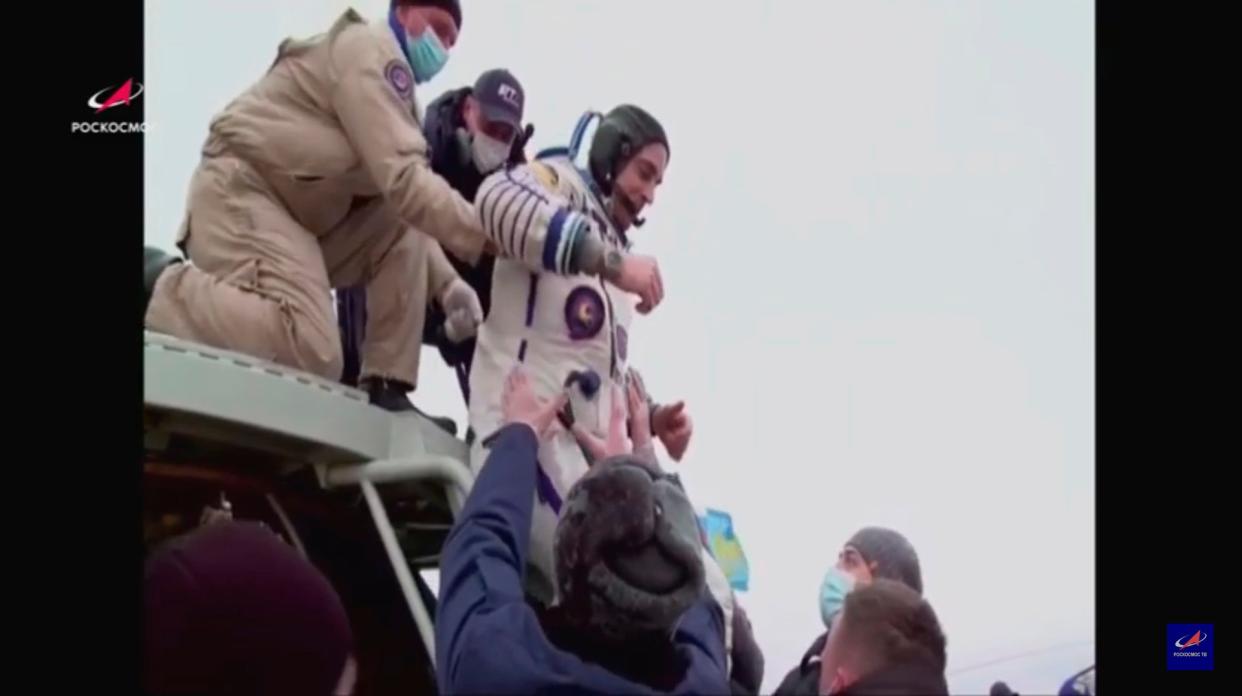First space crew to launch during pandemic lands back down to Earth

After spending months living and working on the International Space Station in orbit, Nasa’s astronaut Chris Cassidy and Russian cosmonauts Ivan Vagner and Anatoly Ivanishin returned to Earth on Wednesday.
The trio had launched to space in April, just weeks after the World Health Organisation declared the Covid-19 outbreak to be a pandemic. At the time, Cassidy told the Associated Press it’s “not like any other time in our lives”. “I'm still in [pre-flight] quarantine, but so is everybody else around us,” he added.
The crew landed back on Earth just south of the town of Dzhezkazgan in the Kazakhstan steppe. After undergoing preliminary medical checks at the landing site, the trio will split up to return home, with Cassidy taking a Nasa plane back to Houston while Vagner and Ivanishin will fly home to Star City, Russia.
Cassidy, who is returning from his third space mission, spent 196 days on the ISS this time around. He has now spent a total of 378 days in space, ranking him fifth-highest among US astronauts.
According to Nasa, during this mission he served as commander of the current Expedition 63 and welcomed SpaceX Demo-2 crew members Robert Behnken and Douglas Hurley of Nasa – the first astronauts to launch to the space station on an American spacecraft from American soil since the retirement of the space shuttle in 2011.
Cassidy and Behnken completed four spacewalks, totalling 23 hours and 37 minutes, to upgrade station batteries. The final spacewalk was the tenth for both astronauts, making them two of only four US astronauts to complete 10 spacewalks, said a Nasa statement.
At the ISS, Cassidy contributed to hundreds of experiments, including a study of the influence of gravity on electrolytic gas evolution. He also worked with Astrobee, which are cube-shaped free-flying robots that may one day assist astronauts with routine duties.
Before returning, Cassidy handed over command of the station to Roscosmos’s Sergey Ryzhikov, and with that began the Expedition 64 mission. Ryzhikov is accompanied by Nasa’s Kate Rubins and Roscosmos’ Sergey Kud-Sverchkov – both serving as flight engineers.
Next month, they are expected to welcome Nasa’s SpaceX Crew-1 astronauts Michael Hopkins, Victor Glover, and Shannon Walker, and Japanese Aerospace Exploration Agency astronaut Soichi Noguchi.
Nasa explained Crew-1 will be the first long-duration mission to fly as part of its commercial crew program and mark the return of America’s capability to regularly launch astronauts from US soil.
For the last 20 years, the ISS has been inhabited continuously by astronauts from different countries while they conduct various tests and develop the skills to “explore farther from Earth, including to the Moon and Mars.” So far, 241 people from 19 countries have visited the station which has hosted more than 3,000 scientific and educational investigations from researchers in 108 countries and areas.

